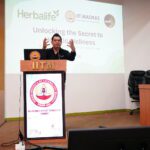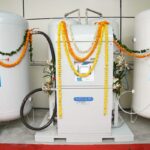IMA emphasizes on making the house risk free to avoid the risk of falling
New Delhi, July 10, 2017: According to statistics, about 14% to 53% fatal and nonfatal injuries in the elderly (above the age of 65) are due to falls, with the associated mortality standing at as high as 86%. India’s elderly population is growing rapidly with the percentage expected to increase to about 10% by 2021. As per the IMA, the need of the hour is to create awareness among family members and caregivers alike on how they can ensure a safe and secure environment for the elderly and prevent falls.
Head injuries, shoulder and forearm fractures, spine fractures, and pelvic and hip fractures are some of the most common fall injuries in the elderly. The risk factors include muscle weakness; gait deficit; balance and postural deficit; visual and hearing deficit; arthritis; Vitamin D deficiency; uneven ground; slippery surfaces; stairs/railing; depression; and Dementia.
Speaking about this, Padma Shri Awardee Dr K K Aggarwal, National President Indian Medical Association (IMA) and President Heart Care Foundation of India (HCFI) and Dr RN Tandon – Honorary Secretary General IMA in a joint statement, said, “Falls are a common occurrence in the elderly but their associated complications can make matters worse. Many people believe that falls are a part and parcel of old age and cannot be prevented. However, this is not the case. It is the lack of knowledge that leads to a lack of preventive action, and thereby falls. Often, falls in the elderly happen at home itself. Elderly patients who have fallen need to get a thorough evaluation done. Doing so will help in determining and treating the underlying cause of the fall, which in turn will help them return to baseline function and reduce the risk of recurrent falls.”
Elderly hospitalized due to falls stay in the hospital twice as long as those admitted due to some other reason. They also see a greater functional decline in activities of daily living (ADLs) as also subsequent institutionalization.
Adding further, Dr Aggarwal, said, “Falls are a sign of declining function and poor health in the elderly. It is important to question elderly patients with known risk factors for falling on a periodic basis. This is more so because many elders may not come out in the open about it, fearing institutionalization. They should also be examined for any physical injuries.”
Some ways in which you can make the house safe for the elderly include the following.
- Provide safety devices such as grab handles, high friction floors and footwear, as well as low power lighting at night in your home
- Regular physical activity can increase muscle strength and improve balance. They will also help in improving co-ordination and help them perform functional tasks in a better manner.
- Periodic monitoring and review of medications and ongoing medical problems
- Ensure adequate intake of vitamin D as its deficiency is associated with increased risk of falling and bone fractures.







